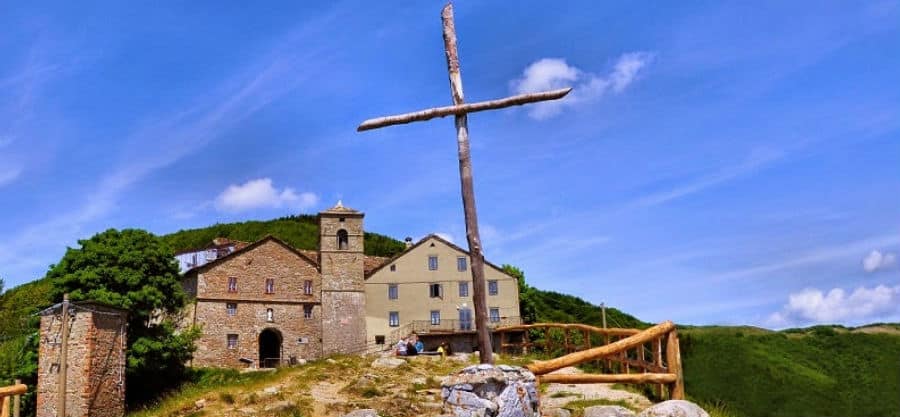he mortal remains of St Peregrine and St White, today preserved inside the Sanctuary, have watched, for centuries on the fate of this outpost which was in the Middle Ages, attended ‘Hospitale” for pilgrims in transit and then transit seating for trade between Tuscany and Emilia. Place of border and place disputed for its prestige. The history of San Pellegrino in Alpe continues still today, unchanged, with its winters swept from the icy snow and his summers quiet among the green frescure of the ridge of the Apennines.
The most ancient historical document that testifies the presence of a church-hospice in San Pellegrino in Alpe dates back to 1110 and is preserved in the Archive of the Bishop of Lucca. However, it is generally agreed that a hospice was present well before that date. San Pellegrino modurante the longobard dominion in the VII century and who continued the work, perhaps San White for first concentrated its efforts in the care and welcoming of the Romiti, who crossed the Alps. In turn not much time the sanctuary-Hospice of San Pellegrino in Alpe found himself to be one of the most stocked with material goods due to various donations.
Even popes and emperors were not lacking to grant privileges and benefizi: Enrico VI in 1187 and Federico II in 1239, the Pope Alexander VI in 1255. In any case, it seems that the ancient Hospitale reached between the XI and XIV century moments of true splendour, also economically. A place of honor in the administration of San Pellegrino lies to Lionello De’ Nobili which, with an intense activity of reordering goods in use to the shrine (goods oftentimes far and little redditizzi), managed to reconstruct, starting from 1461, the Church and the Hospice of San Pellegrino. But it was the task of the grandson of Lionello (who died in 1473) commissioned the sculptor Matteo Civitali, artistic marble temple that now welcomes worthily the relics of saints and Peregrine White.



